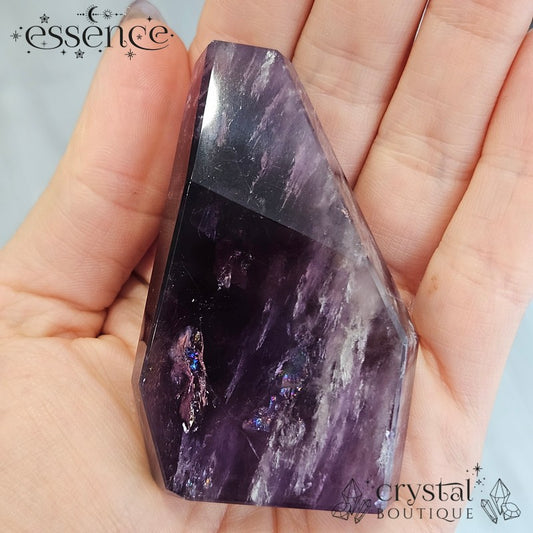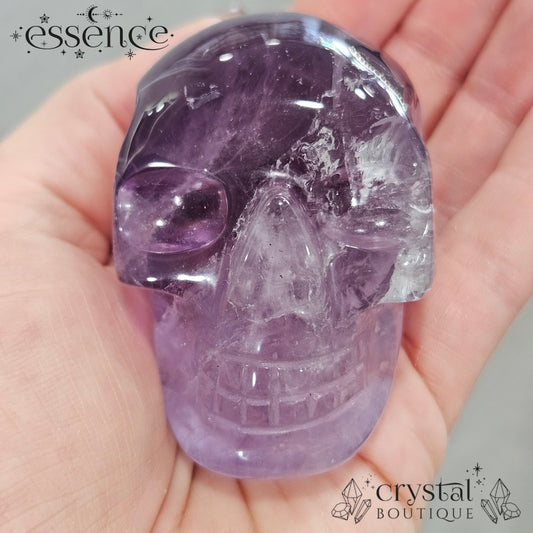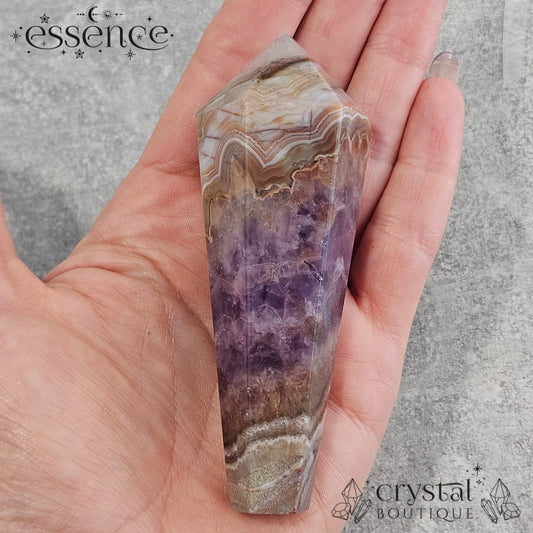Collection: Amethyst - The Stone of Spirituality & Protection
Amethyst – The Stone of Spirituality & Protection 💜🔮
Amethyst is a powerful crystal known for its calming, protective, and intuitive properties. It enhances spiritual awareness, emotional healing, and inner peace while shielding against negativity.
✨ Types of Amethyst:
🔹 Classic Amethyst – The well-known deep purple variety, great for stress relief, intuition, and spiritual growth.
🔹 Dream Amethyst (Chevron Amethyst) – A combination of Amethyst and White Quartz, amplifying clarity, intuition, and protection.
🔹 Phantom Amethyst – Features ghost-like inner layers, symbolizing growth, transformation, and past-life healing.
🔹 Super Seven (Melody’s Stone) – A powerful mix of Amethyst, Smoky Quartz, Clear Quartz, Cacoxenite, Rutile, Goethite, and Lepidocrocite, promoting high vibration energy, spiritual awakening, and deep healing.
🔹 Auralite 23 – A rare and high-energy crystal containing 23 different minerals, enhancing spiritual insight, emotional balance, and connection to higher realms.
🔹 Dreamcoat Amethyst – Displays a mix of colors and mineral inclusions, bringing unique energies of intuition, manifestation, and self-discovery.
Pink Amethyst – The Stone of Divine Love & Emotional Healing 💗🔮Pink Amethyst is a rare and soothing crystal that carries the gentle yet powerful energy of Amethyst, infused with soft pink hues due to Hematite inclusions. It radiates love, tranquility, and emotional balance, making it a perfect crystal for those seeking inner peace, self-love, and spiritual growth.
🔹 Properties: Emotional healing, love, clarity, intuition
🔹 Chakra: Heart & Third Eye 💗💜
🔹 Perfect for: Self-love, emotional balance, higher consciousness, and soothing anxiety
A beautiful and nurturing crystal, Pink Amethyst brings a sense of calm and harmony while deepening your connection to the spiritual realm. 💖✨
Each variety holds unique energies, making Amethyst one of the most versatile and essential crystals for spiritual and emotional well-being! 💜✨
-
Hand Carved Brazilian Amethsyt Skull - 199gms
Regular price £40.00 GBPRegular priceUnit price / per -
 Sold out
Sold outAmethyst Palm Stone
Regular price £5.00 GBPRegular priceUnit price / per -
Phantom Amethyst Angel Hand Carved (Brazil)
Regular price £18.00 GBPRegular priceUnit price / per -
Phantom Amethyst Angel 93g (Brazilian Hand-Carved)
Regular price £22.00 GBPRegular priceUnit price / per -
Amethyst & Crazy Lace Agate Wand 108g
Regular price From £28.00 GBPRegular priceUnit price / per -
Amethyst & Crazy Lace Agate Wand 130g
Regular price £30.00 GBPRegular priceUnit price / per -
 Sold out
Sold outPowellite Amethyst Tower
Regular price £46.00 GBPRegular priceUnit price / per -
 Sold out
Sold outPink Amethyst Standing free form
Regular price £36.00 GBPRegular priceUnit price / per -
Pink Amethyst Free Form
Regular price £39.00 GBPRegular priceUnit price / per -
 Sold out
Sold outPhantom Amethyst Freeform
Regular price £34.00 GBPRegular priceUnit price / per -
 Sold out
Sold outDream Amethyst Tower
Regular price £6.00 GBPRegular priceUnit price / per -
 Sold out
Sold outDream Amethyst Tower 37gms
Regular price £6.00 GBPRegular priceUnit price / per -
 Sold out
Sold outAmethyst Freeform 95gms
Regular price £18.00 GBPRegular priceUnit price / per -
Dream Amethyst Freeform
Regular price £9.00 GBPRegular priceUnit price / per -
Dream Amethyst Tower
Regular price £12.00 GBPRegular priceUnit price / per -
 Sold out
Sold outDream Amethyst Tower 173gms
Regular price £28.00 GBPRegular priceUnit price / per















